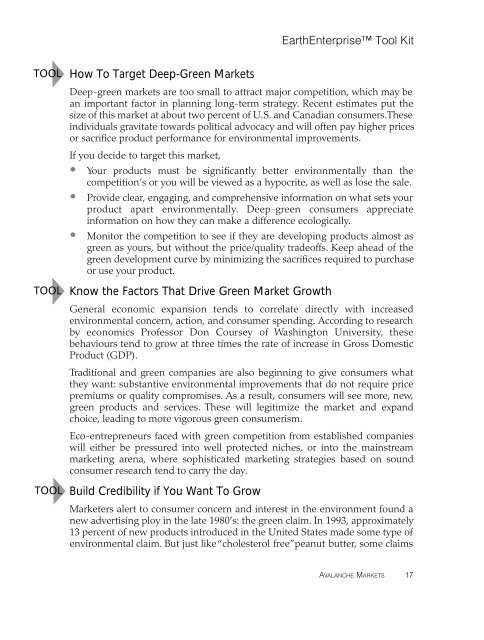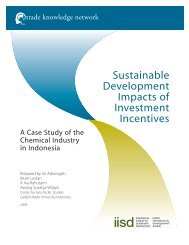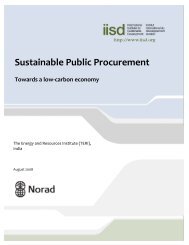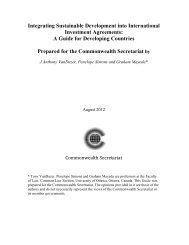Earthenterprise Tool Kit - International Institute for Sustainable ...
Earthenterprise Tool Kit - International Institute for Sustainable ...
Earthenterprise Tool Kit - International Institute for Sustainable ...
You also want an ePaper? Increase the reach of your titles
YUMPU automatically turns print PDFs into web optimized ePapers that Google loves.
EarthEnterprise <strong>Tool</strong> <strong>Kit</strong><br />
TOOL<br />
TOOL<br />
TOOL<br />
How To Target Deep-Green Markets<br />
Deep-green markets are too small to attract major competition, which may be<br />
an important factor in planning long-term strategy. Recent estimates put the<br />
size of this market at about two percent of U.S. and Canadian consumers.These<br />
individuals gravitate towards political advocacy and will often pay higher prices<br />
or sacrifice product per<strong>for</strong>mance <strong>for</strong> environmental improvements.<br />
If you decide to target this market,<br />
• Your products must be significantly better env i ronmentally than the<br />
competition’s or you will be viewed as a hypocrite, as well as lose the sale.<br />
• Provide clear, engaging, and comprehensive in<strong>for</strong>mation on what sets your<br />
p roduct apart env i ro n m e n t a l l y. D e e p - g reen consumers appre c i a t e<br />
in<strong>for</strong>mation on how they can make a difference ecologically.<br />
• Monitor the competition to see if they are developing products almost as<br />
green as yours, but without the price/quality tradeoffs. Keep ahead of the<br />
green development curve by minimizing the sacrifices required to purchase<br />
or use your product.<br />
Know the Factors That Drive Green Market Growth<br />
G e n e ral economic expansion tends to correlate directly with incre a s e d<br />
environmental concern, action, and consumer spending. According to research<br />
by economics Professor Don Coursey of Washington University, t h e s e<br />
behaviours tend to grow at three times the rate of increase in Gross Domestic<br />
Product (GDP).<br />
Traditional and green companies are also beginning to give consumers what<br />
they want: substantive environmental improvements that do not require price<br />
premiums or quality compromises. As a result, consumers will see more, new,<br />
green products and services. These will legitimize the market and expand<br />
choice, leading to more vigorous green consumerism.<br />
Eco-entrepreneurs faced with green competition from established companies<br />
will either be pressured into well protected niches, or into the mainstream<br />
marketing arena, where sophisticated marketing strategies based on sound<br />
consumer research tend to carry the day.<br />
Build Credibility if You Want To Grow<br />
Marketers alert to consumer concern and interest in the environment found a<br />
new advertising ploy in the late 1980’s: the green claim. In 1993, approximately<br />
13 percent of new products introduced in the United States made some type of<br />
environmental claim. But just like “cholesterol free”peanut butter, some claims<br />
AVALANCHE MARKETS<br />
17

















